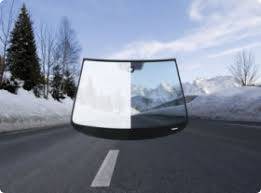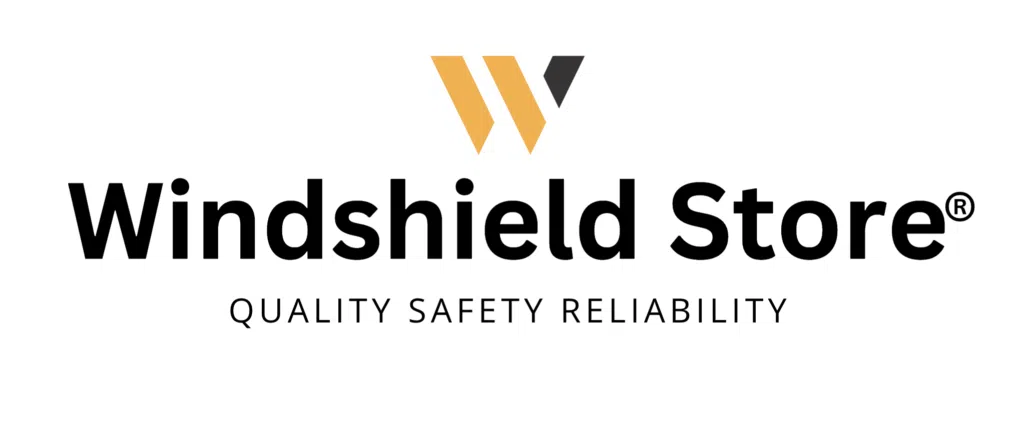A solar windshield is a special kind of windshield glass in which PVB is treated with metal oxides to either absorb or selectively reflect most of the invisible solar spectrum to the ambient.
The solar windshield is like any other laminated windshield but it has multi-layers of IR-absorbing material. The coating consists of two layers of silver sandwiched between anti-reflective dielectric metal oxide layers. Some of the solar windshields like Renault models have 15-20 layers of silver and titanium between the inner and outer solar-controlled glass sheets. This special solar control layer is less than 50 microns thick.

Why Your Car Needs a Solar Windshield?
New stylish and more elegant cars are being designed by prominent car manufacturers to make their models more and more attractive to international markets. New cars have a steep and trendy design with large glass surfaces.
Cars don’t only have a windshield and door glass, but premium car manufacturers offer retractable sunroofs and a panorama sunroof. Though it looks great to have a large glass surface it also causes some serious issues related to car heating and passenger discomfort. Which is neither desired nor acceptable.
It leads to new innovations and inventions that lead to the Coated Solar Controlled Glass.
Effect of IR Rays on Windshield
While designing a car with a large windshield looks great and increases effective visibility for the driver and passengers, it also adds its heating area. The more the size of the windshield glass, the more it absorbs the IR radiations from SUN. These radiations got absorbed by car interiors and they remit IR rays which make the inner compartment heated. The IR rays that got refracted into a car got trapped inside.
More than 40% of the heat that builds up inside a car cabin is due to its windshield. It requires an adequate air-conditioning system to keep it cool. It adds to the car engine load and hence to your fuel consumption. IR heating also creates issues with other delicate digital and electronic systems used in high-performance and premium cars. Another issue with IR absorption is that your car’s interior fabric deteriorates sooner than its life. It adds to maintenance. A coated solar-controlled glass can effectively reduce cabin heat.
Effect of UV Rays & Solar Glass
UV rays consist of UVA and UVB rays. Though most of the UVB rays got reflected by the car windshield. UVA rays with longer wavelengths got transmitted into the car. UVA rays are the prominent reason for skin cancer according to the Skin Cancer Foundation.
As per a study conducted by Dr. Brian Boxer Wachler of the Boxer Wachler Vision Institute in Beverly Hill, California, while windshield blocks most part of the UV rays, protection through side windows is as low as 44%. As per the 29 models of 15 manufacturers tested only 4 models have above 90% blockage for UVA rays. Lexus models offer protection up to 92 – 96% using UV-controlled windshields and window glass.
AGC automotive solar-controlled windshield and solar-controlled window glass provide 99% protection from UVA rays and hence also bears a Skin Cancer Foundation recommendation.
Manufacturing a Solar Windshield
There are basically 2 types of methods to produce a solar windshield.
- Absorptive Method
- Selective Reflection
Absorptive Method: To avoid drive discomfort and extra maintenance, glass manufacturers designed new innovative windscreens with an additional coating layer under an outer glass layer that can absorb additional heat without compromising the car design and visibility. These coating layers help to absorb the selective part of the solar spectrum. These are called Absorptive Glazing. Tinted glass and privacy glass are an example of such glazings. These windshields can be manufactured through conventional techniques and hence reduce the cost of production.
Selective Reflection: There are other windshields that use the selective reflection method to reduce the cabin temperature. As you know while light travels from air to any medium with higher density, a part of the light spectrum is reflected back to the ambient while some light passes through it. To achieve a selective reflection of the non-visible solar spectrum, multiple coated layers of different refractive indices are used together and hence it achieves its purpose of letting the visible light pass and obstructing the IR rays.
Another method to manufacture solar reflective windshields using selective reflection is the use of a mesh of dielectric-metal layers, specially silver-based mesh. Since these are made through vacuum processing, this solar-controlled windshield is cost a bit higher but has better performance than absorptive glazing.
Effects of Solar-Controlled Windshield
Coated solar windshield glass doesn’t absorb all of the sunlight. On the other hand, it absorbs about 70% of IR radiations and UV rays while allowing visible sunlight to pass. This helps to keep the inner cabin cooler and adds to driver comfort. These multi-layer coatings reduce the load on car air conditioning up to 25% which ultimately adds to the car’s performance. The average drop in car cabin air temperature is 1°C while the front dashboard temperature drops up to 3.5°C. (source: read more about the effects of solar glazing on vehicle temperature and fuel efficiency)
Different Solar Coated Windshields
Solar Windshields are manufactured by all major automotive glass manufacturers like Saint-Gobain, Pilkington, Guardian, and AGC Automotive. These are produced under different trade names and batches like Solar Tint, Solar Green, Solex, Solextra, and Solar Shield. These windscreens have a characteristic green tint and can absorb IR rays up to 70%. Some of these windshields have grey or bronze tint. Ranger Rover Evoque uses a purple windshield tint for solar control windshield.
Other kinds of solar-controlled windshields are produced by PGW which sells it under the Sungate™ trademark. These have characteristic purple or orange tint as visible in Mercedes S Class and ML-Class SUVs. According to PGW, “The Sungate™ windshield incorporates a multi-layer metal/metal oxide coating on the inboard surface of the outer glass”.
Guardian’s so-called SilverGuard comprises a family of nano-particle thin-film coated laminates that provide high levels of solar energy reflection while selectively transmitting visible light. The coatings can be combined with a variety of glass substrates to achieve the full range – from the maximum visible transmission and solar reflectivity to privacy-type light transmission combining solar reflectivity with absorbing solutions to achieve very low transmission levels.
Some of the popular models that have solar-reflective windshields are Volkswagen Passat Coupe, Audi A6, and A8, BMW X3, X5, and X6, Porsche Cayenne and Panamera, and Bentley Flying Spur. Also, many premium brands like Mercedes use rear privacy glass to control solar radiation inside the car.
